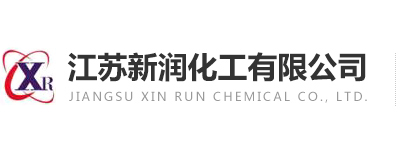| Product name |
Natural diethyl ethanedioate |
| Molecular formula |
C6H10O4
|
| CAS NO. |
95-92-1 |
| Molecular weight |
146.14 |
| Basic Information |
[Product name]: Diethyl ethanedioate; Ethyl oxalate
[Molecular formula]: C6H10O4
[Molecular weight]: 146.14
[CAS number]: 95-92-1
[RTECS number]: RO2800000
[UN Code]: 2525
[Dangerous Goods Code]: 61621
[IMDG Rule Page]: 6152
[Packing type]: Ⅲ
[Appearance and properties]: colorless oily liquid, aromatic odor.
[Main Uses]: as solvent, dye intermediate, the synthesis of drugs and paint, .
|
| Physical and chemical properties |
[Melting point (℃)]: -40.6
[Boiling point (℃)]: 185.4
[Relative density (water =1)]: 1.08
[Relative density (air =1)]: 5.04
[Saturated vapor pressure (kPa)]: 1.33/84℃
[Solubility]: Compatible with most organic solvents, such as ethanol, ethyl ether and ethyl acetate.
[Code of fire classification]: C
[Flash point (° C)]: 75
[Autoignition temperature (° C)]: NA
[Lower Explosive Limit (V%)]: NA
[Upper Explosive Limit (V%)]: NA
|
| Hazardous characteristics |
[Hazardous characteristics]: case of high fever, open flame or contact with oxidants, causing the risk of combustion. Heating decomposition of flammable toxic gases.
[Combustion (decomposition) products]: carbon monoxide, carbon dioxide.
[Stability]: Stable
[Polymer Hazards]: Can not occur
[Contraindications]: acids, alkalis, strong oxidants, strong reducing agents, water.
[Fire fighting methods]: dry powder, foam, carbon dioxide, sand.
[Hazard category]: Category 6.1 Toxicant
[Dangerous Goods Packaging Mark]: 15
[Exposure Limits]: China MAC: No standard established
Soviet MAC: no standard
United States TWA: No standard set
United States STEL: no standard
[Toxic]: LD50: 400 mg / kg (rat oral)
LC50:
|
| Human body harm and protection |
[Health hazards]: This product has a strong irritant. High concentrations severely damage mucous membranes, upper respiratory tract, eyes and skin.
Contact can cause burning sensation, cough, wheezing, laryngitis, shortness of breath, headache, nausea and vomiting.
[Invasive approach]: inhaled ingested percutaneous absorption
[Skin contact]: Remove contaminated clothing, rinse with running water.
[Eye contact]: immediately filed eyelid, rinse with flowing water.
[Inhalation]: Leave the scene to fresh air. Keep the airway open. If necessary, artificial respiration. Get medical attention.
[Ingestion]: to take a lot of warm water to drink, induce vomiting, medical treatment.
[Engineering control]: closed operation, local exhaust.
[Respiratory protection]: Wear protective respirators when exposed to vapor. Emergency rescue or escape, wearing self-contained breathing apparatus.
[Eye protection]: Wear chemical safety glasses.
[Protective clothing]: Wear appropriate protective clothing.
[Hand protection]: Wear chemical-resistant gloves.
[Combustion heat (kj / mol)]: 2992.9
[Conditions to avoid:] Contact with moist air.
|
| Storage and Leakage Handling |
[Leak disposal]: evacuate people living in contaminated areas to a safe area, prohibit unrelated personnel into the contaminated area, cut off the fire source.
Recommended emergency personnel wear gas masks, wear chemical protective clothing. Do not directly contact the leakage, to ensure safety plugging.
Mixed with sand or other non-flammable absorbent absorption, and then transported to the collection and disposal of waste disposal sites.
Can also be used non-flammable dispersant made of latex scrub, diluted by washing water into the wastewater system.
Such as large leaks, the use of dike embankment, and then collect, transfer, recycling or harmless disposal.
[Other]: No smoking, eating and drinking in the workplace.
After work, rinse thoroughly. Separate storage of toxic contaminated clothing, washed and then. Maintain good hygiene practices.
[Storage and transportation precautions]: Stored in a cool, ventilated warehouse. Keep away from fire and heat. To prevent direct sunlight.
Keep the container sealed. Should be oxidant, acids, edible chemical raw materials stored separately.
Handling to light loading and unloading to prevent damage to packaging and containers. Pay attention to personal protection during packing and handling.
|




